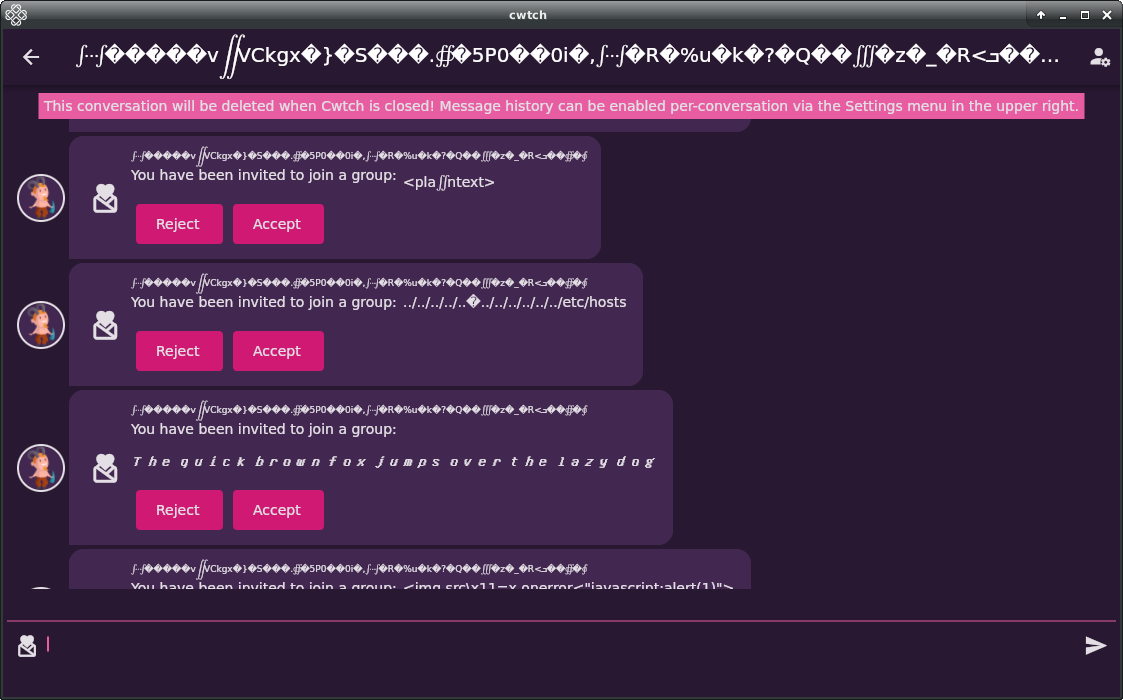Cwtch UI
The UI is now built using flutter.

Deanonymization through Content Injection
Status: Mitigated in several places
Unlike most UI frameworks, Flutter is not a de-facto HTML rendering engine. Any kind of malicious content injection is therefore not-elevated to a critical deanonymization risk in the default case.
To further mitigate this risk:
- Maintain our own set of core UI widgets that the rest of the app relies on that do not make use of any component widgets that may hit the network e.g. Image.network
- Mediate all Cwtch api networking calls through Tor
- Frequently test the UI for potential content injection vulnerabilities via FuzzBot
While none of these mitigations should be assumed robust by themselves, the combination of them should be sufficient to prevent such attacks.
Corruption of UI Chrome through Content Injection
Status: Mitigated
While we assess the mitigated-risk of content injection resulting in deanonymization vectors to be very low, the risk that malicious content causes UI chrome corruption requires additional consideration.
As a simple example, unicode control characters from conversations should not result in corruption to parts of the chrome that they are rendered with.

To mitigate this risk:
- All potentially malicious content is rendered separately at the widget level i.e. we do not mix trusted strings and untrusted strings in the same widget. This confined rendering differences tightly to just the malicious content.
- Frequently test the UI for potential content injection vulnerabilities via FuzzBot
Denial of Service through Spamming
Status: Partially Mitigated
There is currently no limitation on the number of messages that can be sent to a Cwtch server or by a Cwtch peer. Each message requires process and is added to the UI if valid.
We have put in work to ensure that an influx of messages does not degrade the app experience, however it will result in an increase in network bandwidth which may be intolerable or undesired for many people - especially those on metered connections (e.g. cellphone data plans)
In order to be suitable to deploy groups at a wide scale, the app requires a way to prevent Cwtch from fetching information over such connections, and this should likely be turned on by default.
Testing Status
The UI is subject to both manual testing, partially automated testing through fuzzbot, and fully automated testing during pull requests.